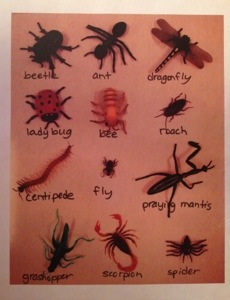
Have you seen Sid the Science kid, yet? The first time I saw my six year old watch this show on PBS, I saw how involved she became. The characters are interactive and when I watch the show, I learn something new about Science. It is amazing to see these students in the classroom and home setting. In the classroom, the teacher shows the children the steps of the scientific method: “Observe! Compare! Contrast! Describe!” Scientific journals are also used in Sid’s classroom. I get some great teaching ideas from Sid. I am grateful that PBS has created such a wonderful learning experience for our youngest scientists!
The best part of this show is that you can show students each episode, from your computer-at school! I project it onto the screen in my classroom and then my students take part in many of the activities afterwards. For teacher resources, you can visit this link: http://www.pbs.org/parents/sid/ Also, I discovered a blog, where a mom and her boys, test out experiments from various episodes. How amazing! Here is that link: http://www.pbs.org/parents/sid/blogs/parents/
These are some of the topics that Sid teaches:
- Exploring habitats
- Little creatures in a forest
- Sid and his mom talk about air pollution
- Force, inertia and elasticity
- Friction, light, and shadows
- Ways to make less trash
- Internet Safety
- Recycling
There are even games that go along with each topic. I just played the weather game. I had fun spinning the weather wheel and then dressing up the character with appropriate clothing! You can even sing 1-2 minute video song clips about his Science topics. What I like the most is that this program and interactive website meets children where they are at. It encourages critical thinking by asking higher level questions, like why? and how? Sid models collaboration as he engages in problem solving discussions. The children are engaged as they learn from Sid! Most of the games on this site can be played on the interactive whiteboard as well.
Sid has an “Investigations” clip video where a real class makes applesauce. Our class viewed the short clip from http://www.pbskids.org and watched how the students figured out the best way to use heat to make applesauce. We then decided that we needed ingredients and a recipe. So, for shared writing, I wrote what they children shared!
Then, I had each student then cut up about ten apples. They did it with plastic knives and has so much fun! They then added them to the crock pot along with sugar, water and cinnamon. We cooked it from 10am to 2:30pm on high heat. At 2:00, I let them each stir and mash the cooking apples. Then when the applesauce was ready, I scooped it into a cup, gave them each a fork-and they enjoyed. Every single student enjoyed eating it! I can’t wait to do it again next year!

This is what the apples looked like at 2:00.

Yum! This is how we enjoyed eating our applesauce!

Here is our shared writing poster.



































































